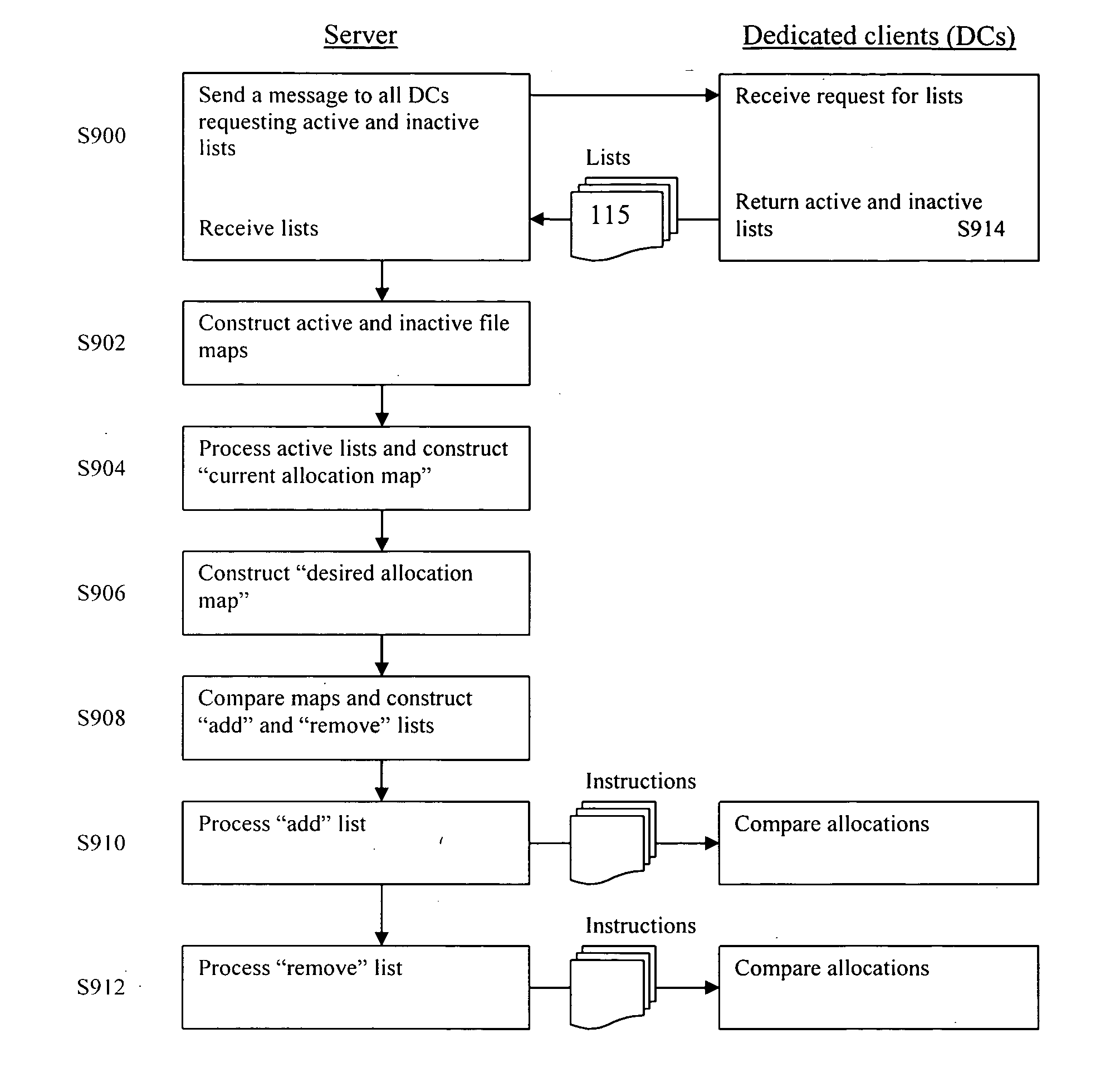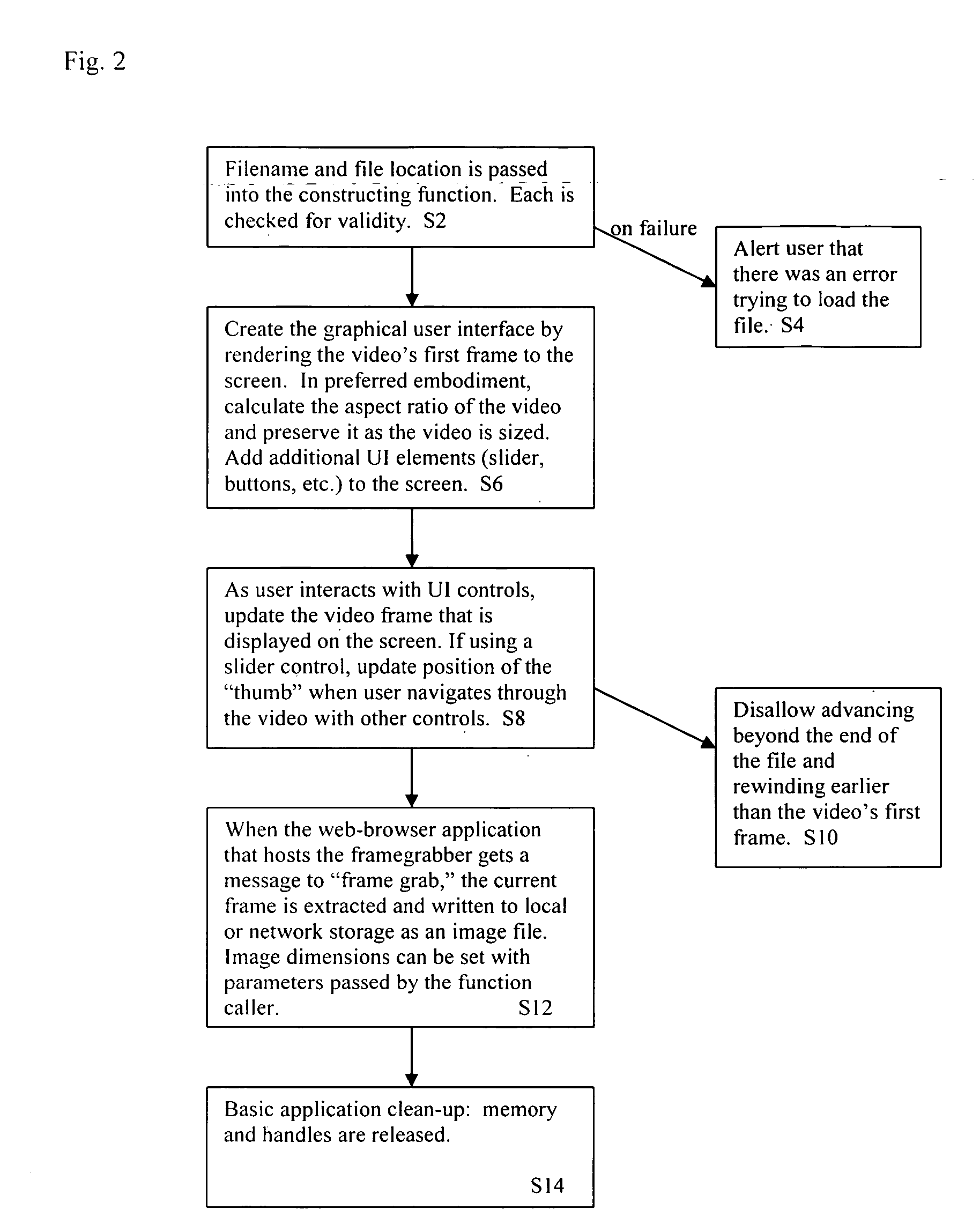Systems and methods for uploading and downloading files in a distributed network
a distributed network and file technology, applied in the field of uploading and downloading files, can solve the problems of complex user interfaces, high technical tasks, and relatively complex tweaking of parameters, and achieve the effects of simple and fast system design, high technical difficulty, and high technical difficulty
- Summary
- Abstract
- Description
- Claims
- Application Information
AI Technical Summary
Benefits of technology
Problems solved by technology
Method used
Image
Examples
example 1
[0072] Centralized control of each DC's file allocation. On a schedule, the Server 117 can adjust the file allocation on all Dedicated Clients (DCs) using the process shown in FIG. 12. A message is first sent by server 117 to each DC 119-121 requesting its lists of active and inactive files. The lists 115 are then stored in temporary storage in server 17.
[0073] For each file known to the Server 117, a list is constructed of DCs on which the file is active and a list of DCs on which the file is inactive (Step S902). These are stored in two new mappings, “DCs with active file” and “DCs with inactive file.” These mappings can be used later to decide which DCs should receive which instructions.
[0074] Each DC's active list is examined and a new mapping (“current allocation map”) is constructed representing the current allocation for each file (Step S904). According to an embodiment of the present disclosure, the allocation can be in the form of a list of client identifiers on which the...
example 2
[0080] Clients query for instructions regarding desired availability. In this example, DCs and Semi-Autonomous Clients (SACs) behave in the same fashion, so the term “client” is used.
[0081] On a schedule, clients can perform the following steps shown in FIG. 13 to adjust availability of files they already have.
[0082] A client sends a message to the Server 117 containing the client's active and inactive lists (Step S940). Upon receiving the message, the Server 117 can process each list and determine if any change in availability is desired. For each file in the active list and inactive lists, the Server can decide to change the file's availability if the file meets certain criteria used by the Server (Step S942). For example, if a file is considered unpopular, sufficiently available, or insufficiently recent, the file may be designated for moving from the active to the inactive list. As another example, if a file's status within the Server 117 has changed from “valid” to “invalid,”...
example 3
[0084] Clients use rules to determine desired availability. In this example, DCs and SACs behave in the same fashion, so the term “client” is used.
[0085] On a schedule, clients can perform the following steps shown in FIG. 14 to adjust availability of files they already have.
[0086] For each file in the client's active and inactive lists, a client queries a rules engine for instructions on what steps, if any, should be taken with the file. The rules engine can be a module contained within the client, or can reside on a different computer (Step S948)
[0087] The rules engine can process the client lists to determine, for each file, if any action is required. The engine can make this decision using attributes of the rules engine itself as well as attributes of the file. The engine might decide that a certain maximum number of files can be active at any given time, and that all other files should be placed in the inactive list. The engine can use various criteria to decide each file's ...
PUM
 Login to View More
Login to View More Abstract
Description
Claims
Application Information
 Login to View More
Login to View More - R&D
- Intellectual Property
- Life Sciences
- Materials
- Tech Scout
- Unparalleled Data Quality
- Higher Quality Content
- 60% Fewer Hallucinations
Browse by: Latest US Patents, China's latest patents, Technical Efficacy Thesaurus, Application Domain, Technology Topic, Popular Technical Reports.
© 2025 PatSnap. All rights reserved.Legal|Privacy policy|Modern Slavery Act Transparency Statement|Sitemap|About US| Contact US: help@patsnap.com



